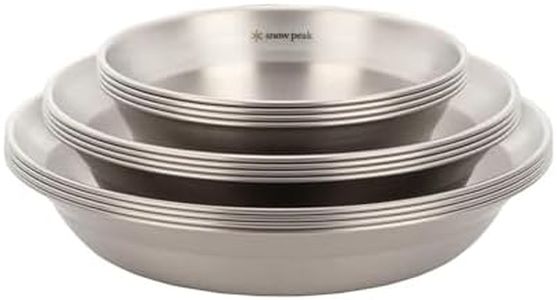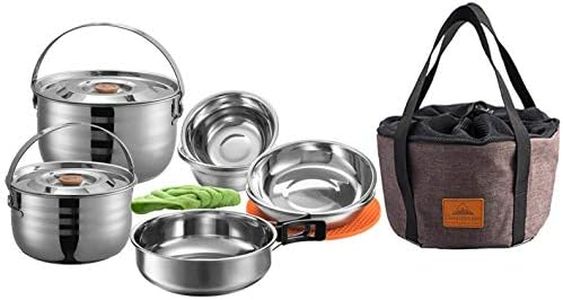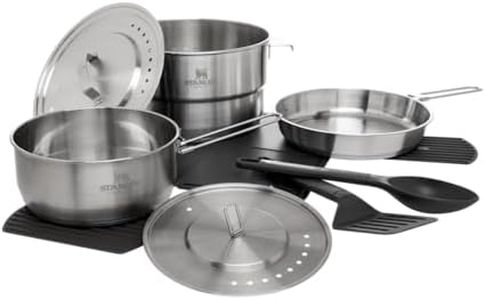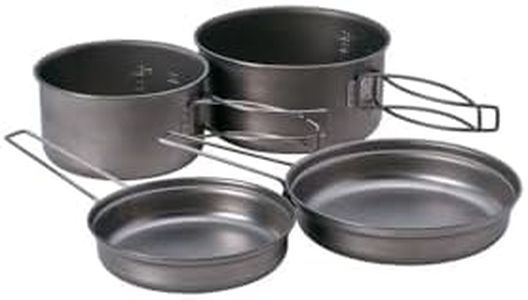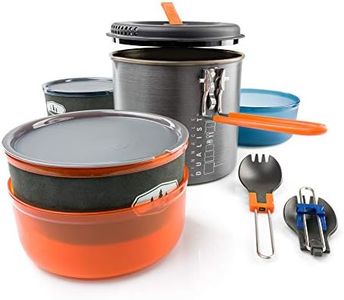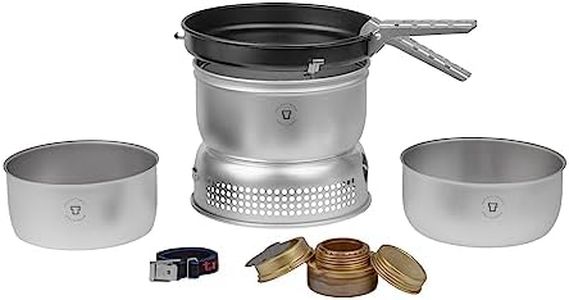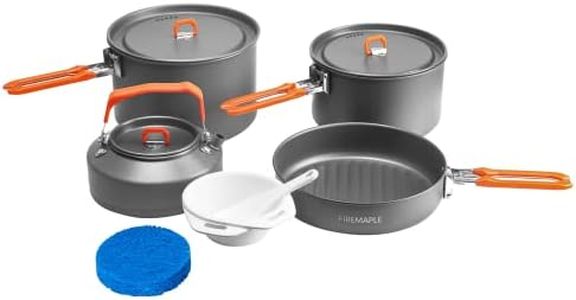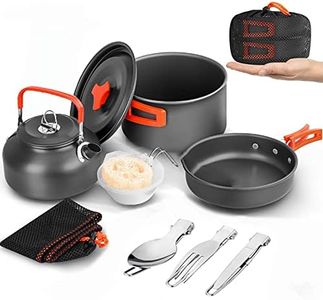We Use CookiesWe use cookies to enhance the security, performance,
functionality and for analytical and promotional activities. By continuing to browse this site you
are agreeing to our privacy policy
10 Best Camping Mess Kits
From leading brands and best sellers available on the web.Buying Guide for the Best Camping Mess Kits
Picking the right camping mess kit is all about finding a balance between convenience, durability, and functionality. A mess kit is your complete eating and cooking solution while in the outdoors, and the right choice can make your camping meals much more enjoyable. When evaluating options, think about your camping style, the size of your group, how you'll be traveling, and what you like to eat. Focus on practical details that affect use and cleaning, rather than just appearance or brand.MaterialThe material of a camping mess kit determines its weight, durability, heat resistance, and ease of cleaning. Common options are stainless steel, aluminum, and plastic. Stainless steel is durable and safe for direct flame but heavier, making it great for car campers or those who prioritize longevity. Aluminum is lightweight and conducts heat quickly, so it's ideal for backpackers, but can dent more easily. Plastic kits are very light and easy to clean, which works well for children or casual campers, but they aren’t suitable for cooking directly over a fire. Consider how you’ll use your mess kit—if you plan to cook over a campfire, go for metal; if weight matters most, look for aluminum or lightweight plastic.
Included ComponentsMess kits come with different combinations of items, such as pots, pans, plates, bowls, utensils, and mugs. Some have everything you need for preparing and eating food, while others are more basic. If you cook varied meals, look for a kit with multiple pots or a frying pan. Solo campers may only need a simple bowl and spork, while families or groups need kits with enough settings for everyone. Think carefully about what meals you plan to make and who will join, then choose a kit that includes all the essentials you require without extra weight or clutter.
Portability and Packing SizePortability is about how easy the kit is to pack and carry, while packing size refers to how small the kit becomes when packed. Stackable or nesting designs save space, which is perfect for backpackers or those with packed vehicles. Lightweight and compact kits are best for hiking or biking trips, while weight or bulk may not matter much for car camping. Examine how the kit packs together and whether it fits into your usual camping bag or backpack.
Ease of CleaningCleaning your mess kit in the outdoors can be tricky, so consider how easy each item is to wash. Smooth surfaces and simple shapes are less likely to hold onto food residues and are easier to wipe clean. Non-stick coatings are helpful but can be scratched or wear off over time. If you tend to cook sticky foods or value quick cleanup, opt for non-stick or smooth-surfaced options. Think about your camping location, too—if water is scarce, easier cleaning becomes even more important.
WeightWeight matters most if you plan on carrying your mess kit over long distances, like during hiking or backpacking. Lighter kits make for easier travel but may sacrifice some durability or cooking options. Heavier kits offer more options and strength but are best suited to car camping where you don’t need to carry your gear far. Consider your typical trip—if you need every ounce to count, pick the lightest kit that still covers your needs.
Number of ServingsMess kits are sized for individuals, couples, or groups. Single-person kits are compact with basic items, while family or group kits have more pieces for shared meals. If you mostly camp alone, a lightweight, smaller set works well. For groups, picking a kit designed for multiple servings saves space and ensures everyone has utensils and dishes. Match the kit size to your usual camping party to avoid packing extra items or lacking essentials.
